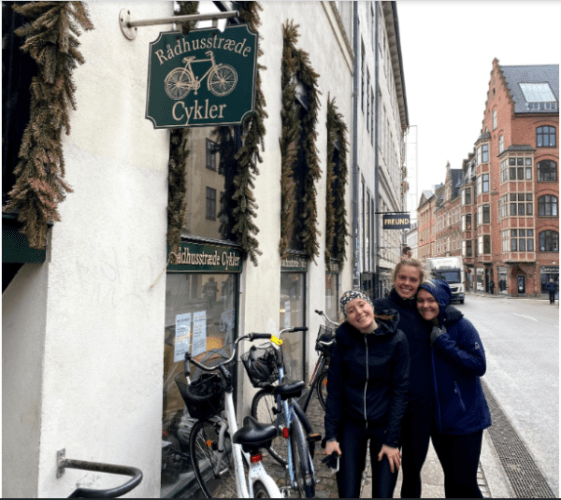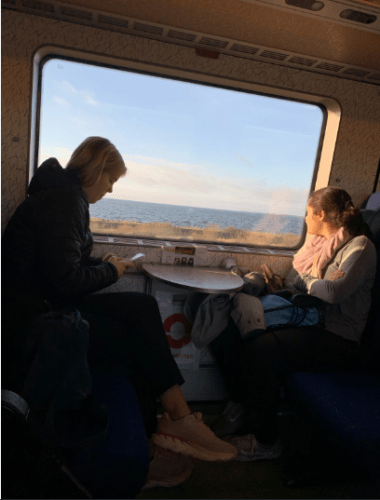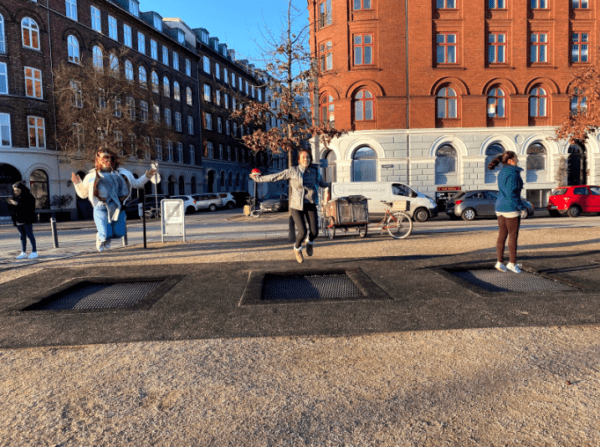A semester cut short: The main takeaways from my time in Copenhagen
Last week, I said a premature goodbye to Denmark and I’m now completing my classes online from my couch, along with the rest of the world. This entry was supposed to be a photo journal about alternative transportation in Copenhagen and I was planning on doing a loop throughout the whole city by taking every form of public transit for a short section. But because I’m no longer there, I am going to summarize and reflect upon my main takeaways about alternative transportation from my semester abroad.
Lesson #1: Design is everything
I think the biggest observation I made while living in Copenhagen was how important intentional design is in cities. There are several reasons why this city in particular excels at encouraging residents to use alternative modes of transportation, but I think the most influential one is the way in which it was designed. The location of the metro stations, the layout of the S-train system, the physical construction of the transportation infrastructure, the easy walkability…all of these factors contribute to the fact that Copenhagen is an amazingly navigable city, one that doesn’t require, even actively discourages, using a car.
The clear intentions behind the city’s design decisions were really apparent to me, and I was only living there for two months. I’ve talked extensively about the infectious biking culture in Copenhagen and how it is made possible by the biking-specific infrastructure. The separate, elevated bike paths really make biking a viable mode of transportation throughout the whole city and I think all cities that can should adopt them. They are so practical, really help control the flow of traffic, and most importantly make bikers feel safe. Because of Copenhagen’s design, cycling is the most efficient way to get around, so people actually do it. We need this mindset to spread across the world.

Two of my roommates and I in front of our favorite bike shop as we were returning our bikes for the semester.
In addition to biking, Copenhagen’s train and metro systems are easy to understand and well laid out, clearly designed and constructed with real people in mind, and created to make their lives easier. These characteristics of transportation design are some of the most obvious takeaways for me, having left Copenhagen. Being back in the American suburbs has really highlighted the lack of foresight we had when designing our communities. In my town, we are only now painting bike lanes on a couple of the main roads, in between moving traffic and parked cars, instead of between parked cars and sidewalks. The government in my community is also adding “sharrows” to some roads that are too narrow for their own bike lane. These strategies, while better than nothing, don’t address the issue of biker safety and leave a lot of room for improvement.
Sustainable urban design is so important in Copenhagen, but that shouldn’t be an anomaly. This should be the default for all cities and communities as we become more impacted by climate change.
Lesson #2: The key is having options
As I wrote about in my interview post with Silvia, if you want people to stop driving cars, you need to provide them with other viable options. Copenhagen does a great job of this, and it’s definitely one of the contributing factors to the low rates of driving in the city. When it’s raining and fewer people want to bike, there are other choices besides getting in the car and driving. We need to have the opportunity to take the metro, the bus, the train, and the ferry so that we actually pick the less carbon-intensive modes of transit. While it’s not feasible for every community to have as many transportation options as Copenhagen does, having an accessible, efficient alternative to driving a car would benefit individuals’ flexibility and reduce emissions.

My roommate and I on a train journey to southern Denmark.
Lesson #3: It’s never too late for cities to change for the better
Copenhagen is a prime example of a city that has prioritized its citizens and because of that, it has been able to create infrastructure to support the use of effective alternative transportation. Automobiles did gain a lot of traction, but over the past several decades, government decisions and individual choices have pushed back, allowing for a renowned surge in cycling and other forms of transport. Other cities can and should learn from this example, shifting from automobile-centered mobility to people-centered mobility. These changes benefit the climate and mental and physical health, as well as reduce city congestion.

The famous Copenhagen trampolines are just one example of how the city helps improve citizens’ mental and physical health, in addition to its focus on great public transportation.
And while not every city is the same size as Copenhagen or has the same flexibility in terms of its infrastructure, all communities have the ability to make changes to improve public transportation, better serve their residents, and mitigate their contributions to climate change.
Unfortunately, my experience abroad was cut short but I had an incredible time living in Copenhagen and I learned a lot from my two quick months there. Not only did I learn firsthand about an unfamiliar culture, I also learned a lot about sustainability and climate planning, specifically in the context of urban design.

View from my seat as I left Copenhagen last week.
I know I will remember this experience for many years to come and I’m incredibly thankful that I had the opportunity to study abroad in an environmentally-conscious city. I hope you all enjoyed following along my journey to learn about alternative transportation in Copenhagen!
Tak for alt,
Rebecca